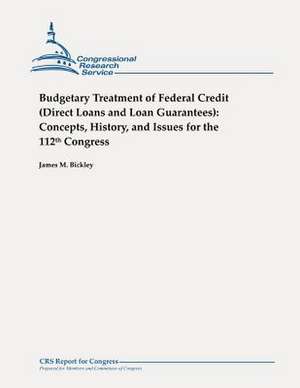Budgetary Treatment of Federal Credit (Direct Loans and Loan Guarantees)
Autor James M. Bickleyen Limba Engleză Paperback
Preț: 88.08 lei
Nou
Puncte Express: 132
Preț estimativ în valută:
16.85€ • 17.64$ • 13.95£
16.85€ • 17.64$ • 13.95£
Carte disponibilă
Livrare economică 17-31 martie
Preluare comenzi: 021 569.72.76
Specificații
ISBN-13: 9781479106059
ISBN-10: 1479106054
Pagini: 38
Dimensiuni: 216 x 280 x 2 mm
Greutate: 0.11 kg
Editura: CREATESPACE
ISBN-10: 1479106054
Pagini: 38
Dimensiuni: 216 x 280 x 2 mm
Greutate: 0.11 kg
Editura: CREATESPACE
